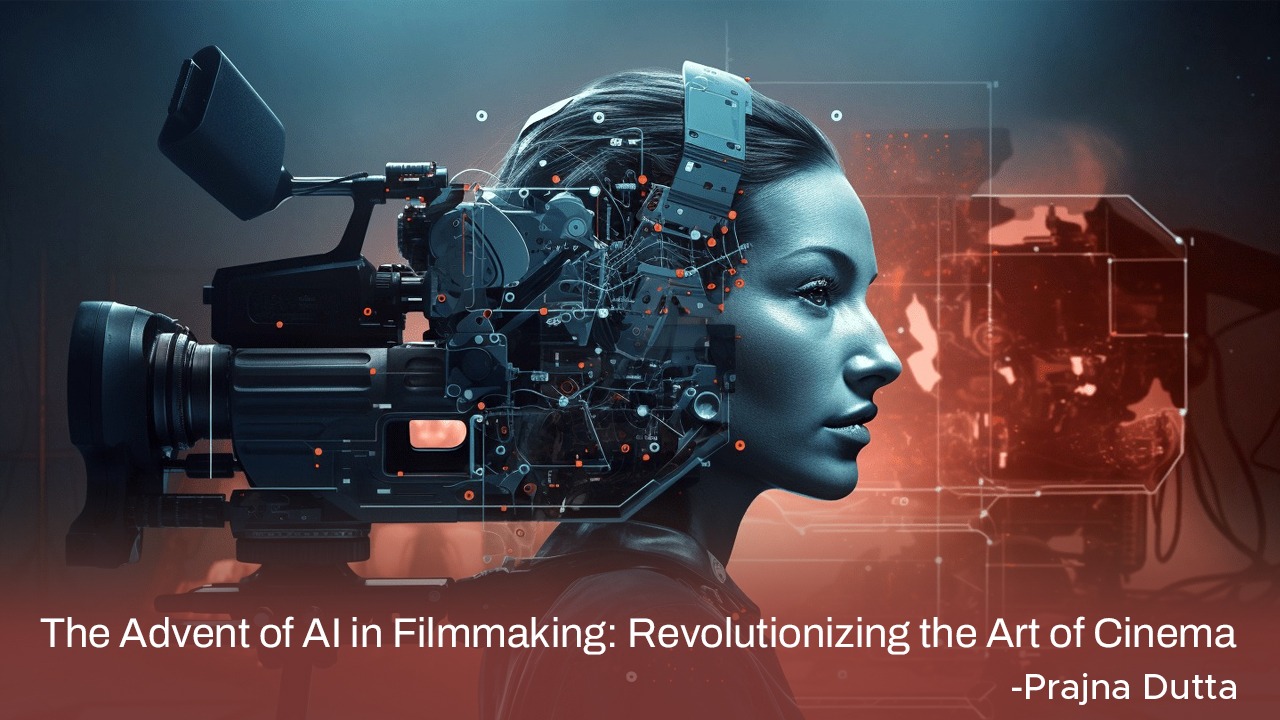Introduction:
Artificial Intelligence (AI) has permeated virtually every aspect of modern society, revolutionizing industries, and transforming the way we live, work, and create. The world of filmmaking is no exception to this transformative power of AI. As this technology continues to evolve at a rapid pace, it is poised to fundamentally change the art of filmmaking, offering filmmakers new tools, techniques, and possibilities that were previously unimaginable. In this article, we will explore the impact of AI on the art of filmmaking, examining how it is reshaping the creative process, enhancing visual effects, improving efficiency, and opening up new avenues for storytelling.
AI in the Creative Process:
Traditionally, filmmaking has been a highly collaborative and labor-intensive process that involves the input of numerous creative professionals, from screenwriters and directors to editors and visual effects artists. AI is now being used to streamline and enhance various aspects of the creative process, offering filmmakers new ways to generate ideas, develop scripts, and even predict the success of a film before it is made.
For example, AI algorithms can analyze vast amounts of data from past films to identify patterns and trends that can help filmmakers make more informed decisions about casting, marketing, and distribution. AI-powered script analysis tools can provide insights into the emotional arc of a story, the development of characters, and the pacing of a film, helping filmmakers fine-tune their scripts for maximum impact.
AI in Visual Effects:
Visual effects have long been a crucial component of filmmaking, allowing filmmakers to create fantastical worlds, breathtaking landscapes, and awe-inspiring creatures that push the boundaries of imagination. AI is now playing a key role in enhancing the quality and efficiency of visual effects production, enabling filmmakers to create more realistic and immersive worlds in less time and at a lower cost.
AI-powered tools can generate photorealistic images, animate characters, and even predict the movement of objects in a scene, reducing the need for manual labor and speeding up the production process. Deep learning algorithms can also be used to enhance the quality of visual effects, such as removing imperfections from footage, enhancing colors, and seamlessly blending CGI with live-action footage.
AI in Efficiency and Cost-Effectiveness:
Filmmaking is a notoriously expensive and time-consuming endeavor, requiring significant resources, manpower, and coordination to bring a project to fruition. AI is helping to make the filmmaking process more efficient and cost-effective by automating tedious tasks, optimizing workflows, and reducing the need for manual labor.
For example, AI-powered editing tools can analyze footage, identify key moments, and automatically assemble a rough cut of a film, saving editors valuable time and effort. AI algorithms can also be used to streamline the casting process, match actors to roles based on their performance history and demographics, and even generate synthetic actors for roles that are difficult to cast.
AI in Storytelling:
At its core, filmmaking is a storytelling medium, allowing filmmakers to convey emotions, ideas, and experiences through the power of images and sound. AI is opening up new possibilities for storytelling, enabling filmmakers to explore innovative narrative structures, experiment with interactive storytelling techniques, and personalize content for individual viewers.
For example, AI-powered algorithms can analyze audience data to identify trends and preferences, helping filmmakers tailor their stories to resonate with specific demographics. AI can also be used to create personalized viewing experiences, such as interactive films that allow viewers to choose their own paths through a story or dynamic narratives that change based on viewer input.
AI can also assist in generating story ideas, predicting audience reactions, and even helping filmmakers explore unconventional storytelling techniques. By leveraging AI tools, filmmakers can push the boundaries of traditional storytelling, creating immersive and engaging experiences that captivate audiences in new and exciting ways.
Challenges and Ethical Considerations:
While the integration of AI in filmmaking offers numerous benefits and opportunities, it also raises important challenges and ethical considerations that must be addressed. One of the key concerns is the potential impact of AI on employment in the industry, as automation and AI-driven tools may replace certain roles traditionally performed by human professionals.
Additionally, there are ethical considerations surrounding the use of AI in filmmaking, such as the implications of using AI to manipulate audience emotions, create deepfake content, or infringe on individual privacy rights. Filmmakers and industry professionals must navigate these ethical considerations carefully and ensure that AI is used responsibly and ethically in the creative process.
Conclusion:
The advent of AI in filmmaking represents a paradigm shift in the art of cinema, offering filmmakers new tools, techniques, and possibilities that have the potential to revolutionize the industry. From streamlining the creative process to enhancing visual effects, improving efficiency, and opening up new avenues for storytelling, AI is reshaping the way films are conceived, produced, and consumed.
As AI technology continues to advance and evolve, it is essential for filmmakers to embrace these innovations, experiment with new approaches, and leverage AI tools to push the boundaries of storytelling and visual expression. By harnessing the power of AI in filmmaking, creators can unlock new levels of creativity, efficiency, and audience engagement, ushering in a new era of filmmaking that is defined by innovation, imagination, and limitless possibilities. The future of filmmaking is here, and AI is leading the way towards a bold and exciting new frontier in cinema.

LlDsmUZIqAOBprCF
LlDsmUZIqAOBprCF